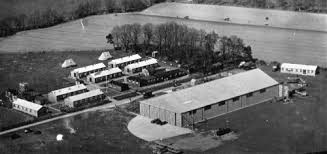
In the early years of the Cold War, western powers were desperate to know what was happening behind the closed borders of the Soviet Union.
They devised various options for peeking behind the Iron Curtain and their solution turned out to be delightfully low-tech and was unleashed in the north of Scotland.
Easter Ross became the launch pad for scores of spy balloons, which were launched by the American air force and sent on their way towards the Eastern superpower.
Some of the objects failed to rise to the occasion, with a few landing in nearby farmers’ fields in and around Evanton, six miles from Dingwall.
Though it sounds like something from the X Files, the United States Cold War spy balloons venture – known as Project Genetrix – was wheeled out in 1956 in a genuine attempt to discover covert information about the Soviets by taking photographs from the sky with high-resolution cameras.
Scottish historian David Mackay is researching this bizarre event and has asked if any Press and Journal readers have memories of the short-lived experiment.
Mr Mackay, a contributor to the National Library of Scotland’s Cold War Research project, is writing a book about the US military’s activities in Scotland as tension and suspicion increased between the Eastern Bloc and NATO countries.
He would like to hear from anyone who has a story to tell about the episode.
“In 1956, the United States Air Force launched more than 100 huge balloons from RNAS Evanton,” he said.
“The operation began in June 1955 when a detachment of Americans arrived to check the suitability of the location for the operation.
“More than 120 Americans moved to the base a few months later. When the operation ceased at the end of March 1956, the Americans went home.
“The hardware was sent by ship to Invergordon, then it was unloaded and transported to Evanton in trucks.
“The huge movement caused quite an impact on the population, who had never seen so many trucks before. Buildings even shook with the vibration of the heavy traffic.”
The entire operation lasted for four weeks in January and February, but there were problems for the US troops as they tried to cope with a frozen Scottish winter.
Many of the balloons did not launch successfully and crashed into local farmers’ fields, as well as into the Cromarty Firth.
But the venture highlights the often outlandish methods which were used in pursuit of gaining vital information about the ‘enemy’.
Mr Mackay added: “In the early stages of the project, it was considered that all balloons should be launched from Scotland.
“However, because of the particularly cold winter that year, this plan was scrapped.
“Other balloons were launched from Norway, Turkey and Germany.”
Only one managed to cross to the USSR successfully, with its flight was terminated by radio signal, having travelled for 158 hours.
For those who engineered the project it was enough. Its camera package was retrieved in mid-air by a USAF C-119 aircraft over the Pacific Ocean.
It contained 900 feet of film and is said to have produced 1,000 useful photographs.
The background
Balloons were the key to more than one critical Cold War operation.
The poetically-titled Winds of Freedom used leaflet-filled hydrogen balloons to fight Communism over a six-year period.
It began in 1951 in West Germany and involved sending the balloons into Czechoslovakia, Poland and Hungary.
They were designed to either burst in flight, scattering their cargo, or eventually come to rest on the ground where the items within could be recovered.
The propaganda leaflets bore a variety of messages to those in countries under Soviet control, with “Tyranny cannot control the winds, cannot enslave your hearts” one such slogan.
Food items were often part of the cargo.
Hundreds made it all the way to the Soviet Union – where they were said to have caused significant disruption in its airspace.
Many were shot down by aircraft or through anti-aircraft fire in what US officials described, tongue-in-cheek, as a “very strong Soviet protest” on the presence of so many “weather balloons”.
There was, however, little official discussion of the tactics, as both sides exercised a typically Cold War silence on the matter.
Anyone with information about the project can contact Mr Mackay by email at d.g.mackay@btinternet.com.